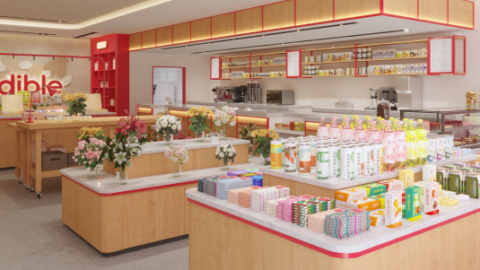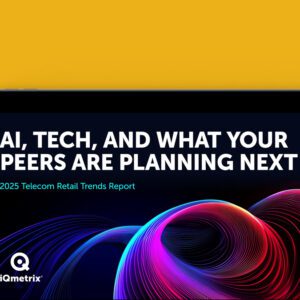Editor’s Note: This article is an excerpt from one of RetailWire’s recent online discussions. Each business morning on RetailWire.com, retail industry execs get plugged in to the latest news and issues with key insights from a panel of retail industry experts.
It worked in Seoul, so why not in Philly?
A RetailWire story from July 2011 reported on Tesco’s virtual store set up on a board at train stations in South Korea, where consumers could use their smartphones to scan QR codes on grocery items and order them for delivery later that day. When readers were asked if a similar system would be a success here in the U.S., 64% responded that it would be somewhat to very successful.
Now comes news that Peapod has set up a similar system on Philadelphia transit station ad boards owned by Titan, the largest transit advertising company in North America.
According to a Peapod press release, “Users simply scan the QR code listed in the ad to get the Peapod app, use the barcode icon to start scanning the items on the ads and once in the app, browse thousands of items — just as they would in the brick and mortar grocery store. Peapod also is running a special promotion. Users are encouraged use ‘PHILLYRAIL’ as a promo code for $20 off their first order and 60 days of free delivery.”
In order to develop an in-depth discussion regarding the potential success of Peapod’s QR Code campaign, Anderson asked RetailWire readers the following questions:
· Now that Peapod has jumped in, do you expect to see big growth in transit station programs for online grocery services in major metro areas around the U.S.?
· Is Peapod the most likely to succeed with this approach, or do you see others currently in online grocery (or not) that would benefit from virtual store technology using QR codes?
While a train station seems like an unorthodox and unexpected selling channel, this venture makes perfect sense, according to Paula Rosenblum, Managing Partner of RSR Research.
“Anytime you have people with idle time on their hands, a smartphone, and a big stretch of wall, then marketing and selling can happen,” Rosenblum said. “I do wonder about people getting so enthralled that they miss their trains, but better to leave the house 30 minutes earlier to shop on the platform than go to the store — especially if the product is available for pick-up on your way home that evening.”
Other industry professionals also indicated that Peapod is taking the appropriate measures to appeal to the largest population in the U.S.: working commuters.
“Commuters are the perfect captive audience — suburban, working adults with smartphones,” noted Liz Crawford, President of Crawford Consulting. “While the absolute number of shoppers may be finite, the concept is a good one because it trains shoppers to use the app as a retail channel.”
Although grocery delivery is still acknowledged widely as a luxury service, Peapod can succeed in this initiative if the merchant focuses on appealing to the time-starved shopper, according to Mark Heckman, Principal at Mark Heckman Consulting.
“I first heard of this concept about a year ago in South Korea, where public transit was widely used among the executive class, and I thought it to be an outstanding idea,” Heckman said. “But despite consumer surveys that predict critical mass acceptance, home delivery is still a luxury item for many, and is totally off the radar screen for most middle income Americans. However, this service can be attractive to consumers where ‘time’ is a scarcer commodity than cash. Accordingly, if the transit audience represents a good fit and connects to the cash- rich and ‘time starved,’ there likely will be a good return on this type of interactive advertising placement. If not, it will more likely become be an expensive repository for graffiti.”













